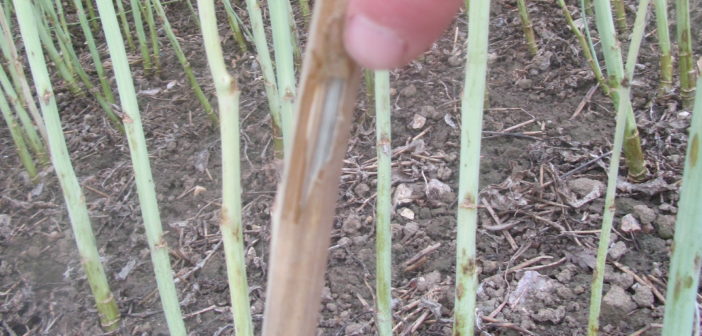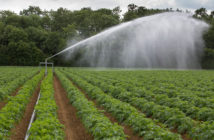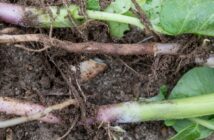As harvest approaches and the hot weather hopefully returns, growers may start to see areas in the field where the crop looks to be ripening prematurely. This could be symptoms of Verticillium wilt, so it is worth going out to inspect crops and see if this disease is found, says Neil Groom, technical director of Grainseed. “If you have Verticillium in your soils, the only way to live with it is to grow a variety which has good Verticillium wilt resistance or tolerance. You have no other choice. Using crop intervals or rotations is impractical, since the disease remains viable in the soil for over 20 years. Nor are there any approved chemical answers. In the East, Midlands and the West 8% of crops had this disease last year according to Crop Monitor. If you don’t grow a resistant variety, you will have to suffer the consequences. We suggest that those who are seeing Verticillium wilt now or in the past few years, make a proactive decision to grow a resistant variety this autumn.”
Plant pathologist Dr Faye Ritchie of ADAS points out that Verticillium symptoms are usually seen as the crops starts to ripen. “We have already seen the first symptoms this year. What to look out for are yellowing leaves, premature ripening of branches and grey striping down stems, often on one side only but it can be the whole cross-section of a stem. Underneath the vertical stripes, if you peel off the outer stem layer you will see grey vascular tissue. If you use a hand lens, you can see tiny black dots or microsclerotia. The microsclerotia survive in the soil for over 20 years to infect subsequent crops, hence the impractical nature of crop intervals in its control.”
“To control it sustainably, you have to use resistant varieties,” says Neil. “Theoretically growing particularly susceptible oilseed rape varieties in disease-affected area could lead to a build-up of microsclerotia in the soil.
Logically the opposite could also apply, so by growing a resistant variety you could minimise build up in the soil.”




